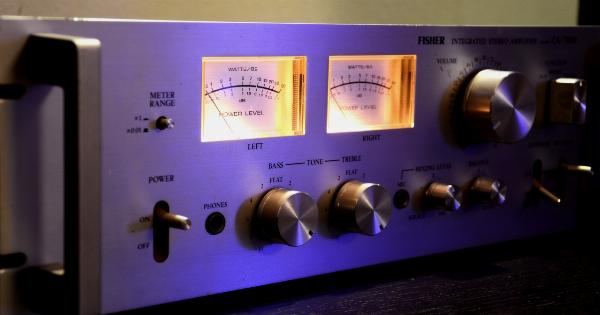As dog owners, we often wonder what goes on in the minds of our furry friends.
Can they experience various emotions like humans do? Do they ever feel envious? In this article, we will explore the concept of envy in dogs and provide insights into understanding their emotions.
Can Dogs Experience Envy?
Envy is a complex emotion associated with feeling a longing for something that someone else possesses and a desire to have it for oneself.
While dogs have a wide range of emotions, including joy, fear, and sadness, the concept of envy in dogs is still a matter of debate among experts.
Some animal behaviorists argue that dogs do experience envy.
They point to instances where dogs exhibit behaviors that seem to mimic envy, such as stealing objects that belong to other dogs or acting aggressively when another dog receives more attention. These behaviors may be interpreted as signs of envy, suggesting that dogs have the capacity to feel this emotion.
On the other hand, some experts believe that dogs do not experience envy in the same way humans do. They argue that dog behavior is primarily driven by survival instincts and social hierarchies.
While dogs may display possessive behavior, it is more likely a result of resource guarding or a need to establish dominance rather than experiencing envy.
Recognizing Signs of Envy in Dogs
While the presence of envy in dogs is still debatable, there are certain behaviors that may indicate a sense of jealousy or envy-like emotions. These behaviors can vary from dog to dog, but some common signs include:.
1. Possessive Behavior
Dogs may exhibit possessive behavior when they feel threatened or insecure about their belongings. This behavior can manifest as guarding their toys, food, or even their humans from other dogs or pets.
While possessiveness may not be envy in the true sense, it can be a sign of feeling threatened by the presence of others.
2. Attention-Seeking
If a dog feels neglected or wants more attention from their owner, they may engage in attention-seeking behaviors. They might nudge their owner, bark excessively, or attempt to interrupt interactions between their owner and other dogs or people.
These behaviors could be indicative of a desire to be the sole focus of attention.
3. Competitiveness
In multi-dog households, dogs may display competitive behavior when it comes to resources like food, treats, or preferred sleeping spots. This competitive nature could suggest a form of envy or a desire to have what the other dog has.
It is important to note that such behavior might also stem from a general sense of competition within the pack hierarchy.
4. Acting Out
In some cases, a dog may act out aggressively or engage in destructive behavior when they perceive another dog receiving more attention or better treatment.
This could involve growling, biting, or even damaging objects in an attempt to redirect attention towards themselves. Such behaviors may be a response to feelings of envy or frustration.
5. Behavioral Changes
Envy or jealousy-like emotions can sometimes lead to changes in a dog’s overall behavior. They might become more withdrawn, exhibit signs of depression, or even engage in self-destructive behavior.
These changes are typically a result of feeling unfulfilled or dissatisfied, possibly due to perceiving unequal treatment or resources.
Understanding Dog Behavior and Needs
While the interpretation of envy in dogs remains disputed, it is crucial to focus on understanding and fulfilling their emotional and physical needs. Dogs are social animals with unique personalities and preferences.
It’s essential to provide each dog with individual attention, proper training, and a stimulating environment.
Here are some tips to ensure your dog feels loved and fulfilled:.
1. Personalized Attention
Offer individual attention and affection to each dog in a multi-pet household. Spending quality one-on-one time with each canine companion helps them feel valued and reduces the chances of envy-like behaviors.
2. Equal Resources and Training
Ensure that resources like food, treats, toys, and sleeping areas are distributed equally among your dogs.
Fair and consistent training practices can also help establish a harmonious environment and minimize instances of competition or perceived favoritism.
3. Significance of Socialization
Proper socialization is crucial for dogs to develop healthy relationships with other animals and humans.
Positive experiences with other dogs and encounters that involve sharing resources can reduce the chances of possessive behaviors and envy-like tendencies.
4. Positive Reinforcement
Positive reinforcement training techniques, such as reward-based training, help build a strong bond between you and your dog.
It encourages desired behaviors and creates a positive association, reducing the likelihood of negative emotions like envy or jealousy.
5. Consultation with a Professional
If you are concerned about your dog’s behavior or suspect feelings of envy, it may be beneficial to seek the guidance of a professional animal behaviorist or a veterinarian.
They can help assess your dog’s emotions and provide appropriate advice tailored to your specific circumstances.
The Complexity of Canine Emotions
While the debate about whether dogs can experience envy continues, it is evident that dogs possess a rich emotional life. Understanding these emotions and providing a supportive environment is essential for their overall well-being.
Whether envy exists or not, promoting a positive bond and meeting your dog’s emotional needs will create a happier and more balanced canine companion.



























